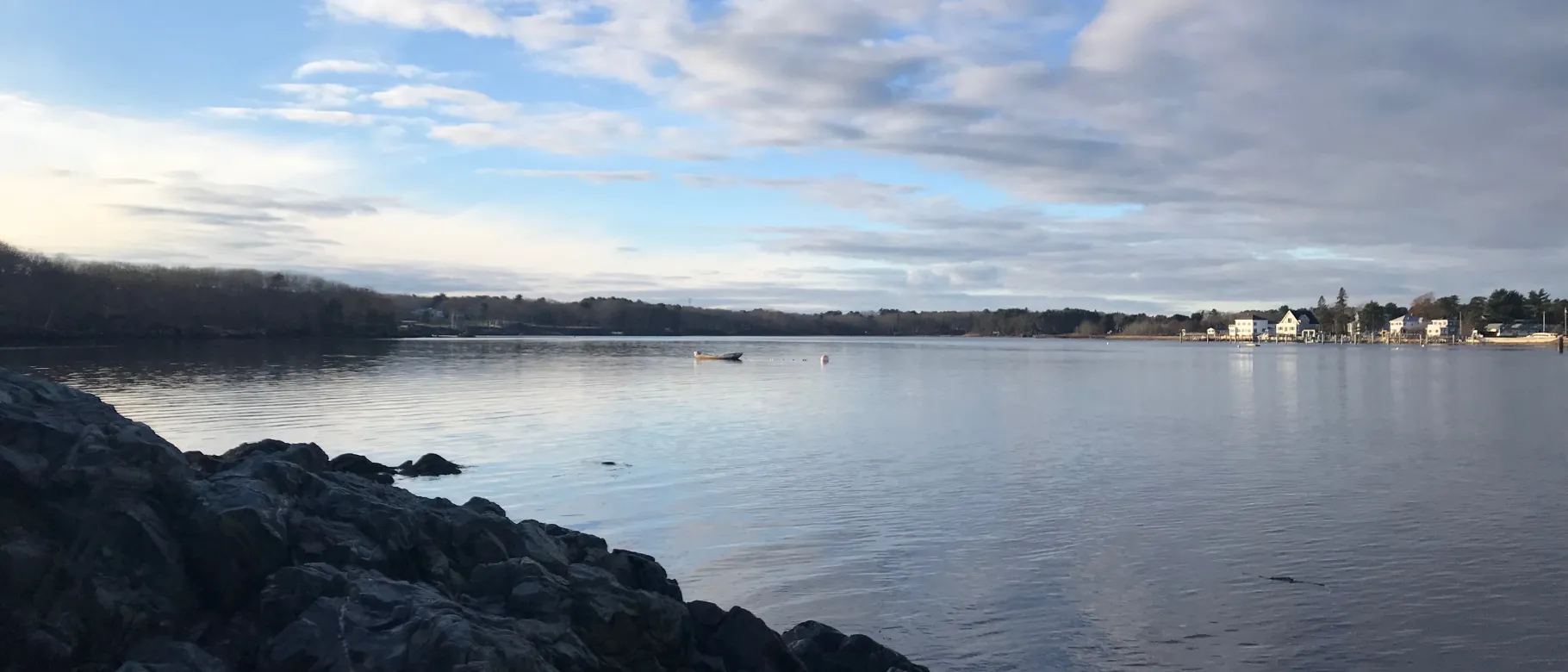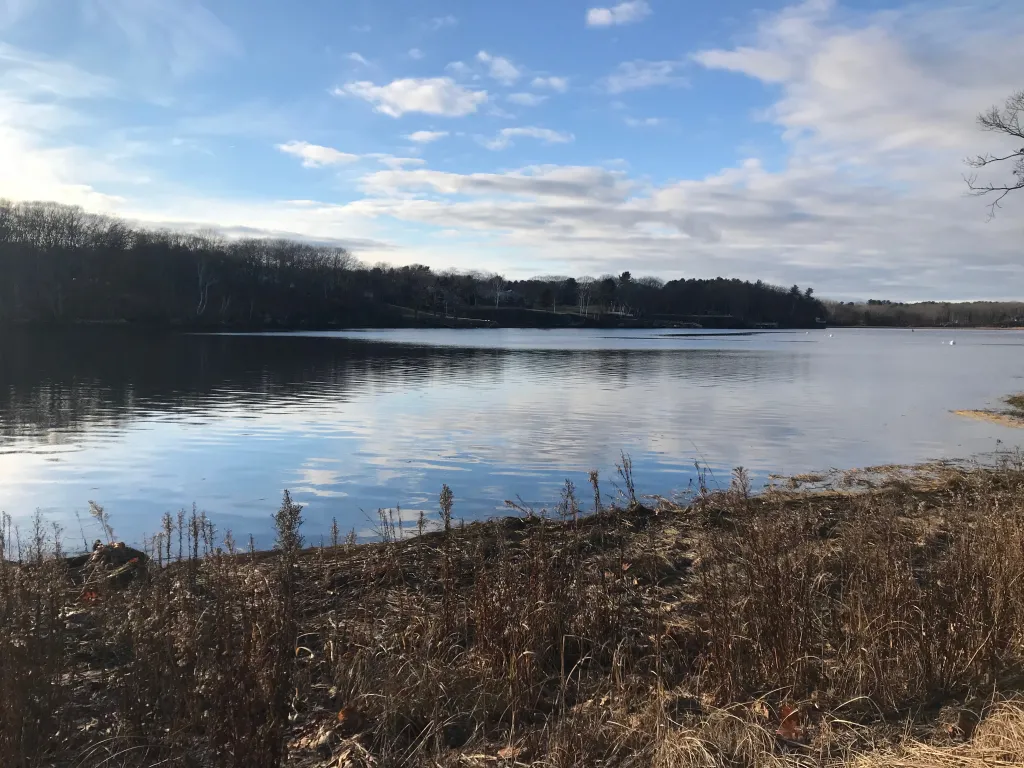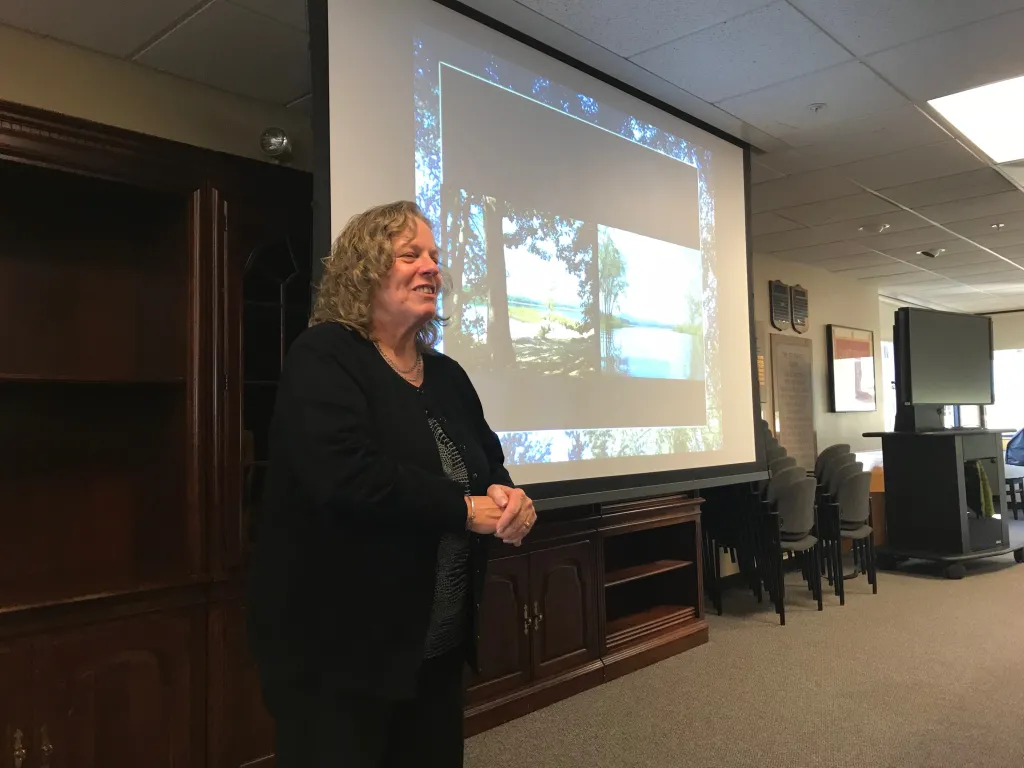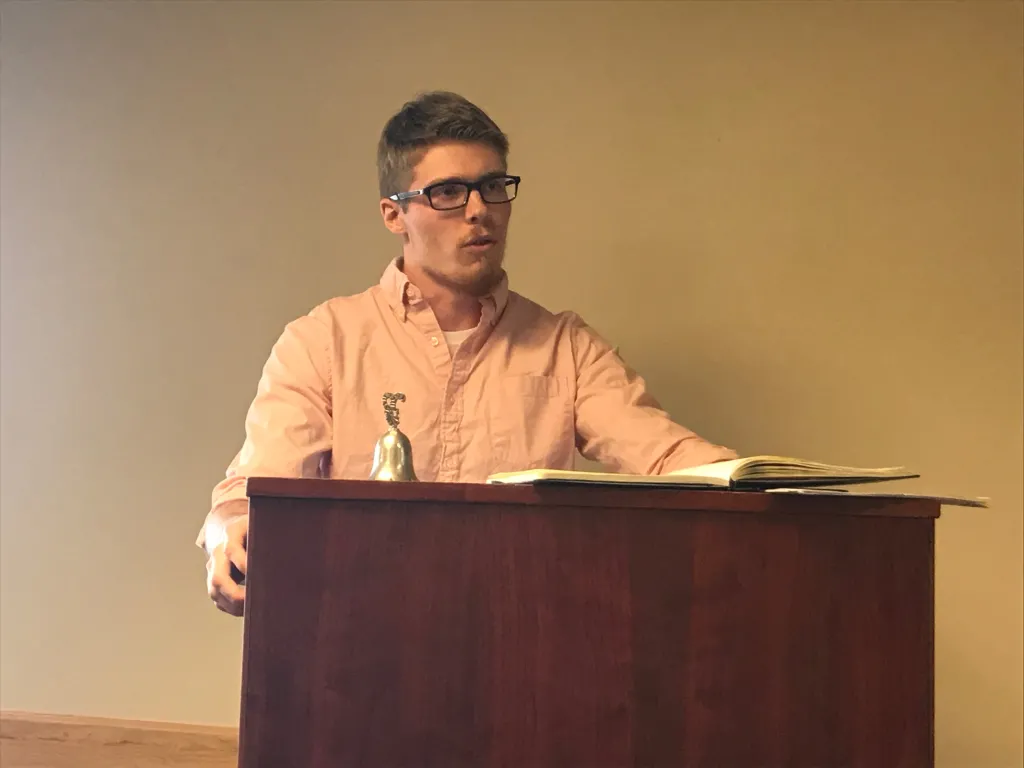UNE takes lead role in water quality protection of Saco Watershed

UNE recently hosted the annual meeting of the Saco Watershed Collaborative on the Biddeford Campus.
The Collaborative is a dedicated group of professionals, community members and scientists working to protect the Saco River Watershed.
The quality of the water is important for 32,000 people in Biddeford, Saco and Old Orchard Beach who rely on the Saco River for their drinking water. Soon, it could be important to many more people.
“The plumbing, infrastructure and planning has already been done to link every single community in southern Maine to the Saco River,” says Christine Feurt, Ph.D., associate lecturer in the Department of Environmental Studies. “So, it's the future of drinking water for the southern part of Maine.”
Feurt is charged with bringing together all of the stakeholders to work on the shared goal of protecting the watershed.
“My primary role is to facilitate the partnership,” Feurt explains. “It's bringing people together to accomplish a goal that nobody can do by themselves.”
Led by UNE, the collaborative conducted outreach fieldtrips and meetings last year to demonstrate the types of stewardship occurring in the watershed. Thirty-one organizations participated to help build collective knowledge and develop an action plan to measure progress and guide the next chapters of Saco Watershed conservation.
Feurt also engages UNE students in the collaborative as part of their studies.
“I do that in more of a social science way than a biological science way,” she says. “How do we gather people together, understand what they value, get them to get along and accomplish things that protect the watershed?”
Emily Greene ’15 (Environmental Science) is the outreach coordinator for the Saco Watershed Collaborative. She is also one of Christine Feurt’s former students.
“We find a lot of hearts and minds are changed and people become more empowered when they are out in the watershed — seeing the work that we do and seeing the results of that work,” states Greene.
To help future students continue the work being done by the collaborative, Kris Olson (Environmental Science, ’19) has spent hundreds of hours compiling and coordinating information for an interactive map of the watershed. The map provides some data from water quality testing sites, but more importantly it provides contact information so that users can get up-to-date information.
“Anybody doing research on water quality or on any other issues within the watershed can hopefully use this to access the data they’re looking for,” Olson comments.
Olson says working on the map fit nicely into his studies at UNE.
“My minor is GIS, Geographic Information Systems, which is taking data and making it more user friendly and representable,” he explains. “My major is Environmental Science, and the work deals with the natural world, especially the watershed.”
The 1,700 square miles of the Saco River Watershed is fed by an ecologically diverse land area shared by the states of Maine and New Hampshire. Members of the collaborative say the best way to protect the Saco River for drinking water, livelihoods and recreation is to work together on research and actions.
“We think it's worth the time to bring people together and focus on shared goals for clean water,” said Feurt.


